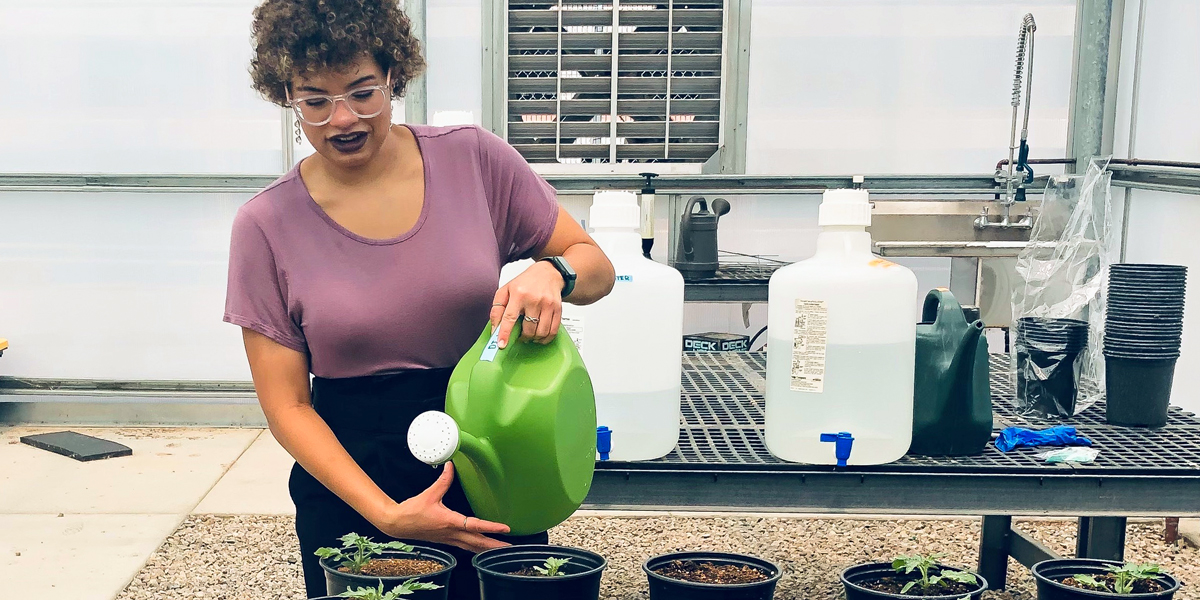Working with Biological Sciences Professor Matthew Escobar, Ph.D., and research partner Sheyenne Black, Madison Stewart studied if a soil’s microbiome—its ecosystem of bacteria, fungi and other organisms—affects nutritional content in crops, specifically tomatoes.
“The larger goal of this project is to figure out if there is a relationship where we can alter the nutritional content of these tomatoes using a process called biofortification—which is biotechnology, agricultural practices or selective breeding to increase crop nutrition—because a lot of people are nutrient-deficient in the U.S.,” Stewart says.
For the project, Dr. Escobar gathered five soil samples from across Southern and Central California, which were then split in half. The first half kept its live microbiome, while the other half was steam-sterilized to kill the microbiome. The team then grew micro tomato plants in each, as well as in a steam-sterilized potting mix. The resulting tomatoes were then freeze dried, ground into a powder and analyzed for nutrient content.
The study confirmed the team’s hypothesis that a relationship exists between the soil microbiome and the crops’ nutritional content—and earned Stewart first place in the Biological and Agricultural Sciences (Undergraduate #1) category. Since then, the team has conducted further analysis and found high levels of ectoine—a compound plants do not produce, but may increase their drought resilience—in tomatoes grown in soil with live microbiomes. Future research would investigate how the microbiome changes the tomatoes’ nutritional content.
“This ectoine content might be beneficial in times of drought, and if we knew [the relationship], we could pass on [the knowledge to] farmers,” Stewart says. “As for human consumption, it’s a little bit further in the future, but if we can figure out which specific bacteria cause specific nutrient changes, you might be able to engineer a soil microbiome to get a desired crop.”
Following graduation, she’ll begin a Ph.D. program at University of California, Davis to study stem cells and regenerative medicine.
